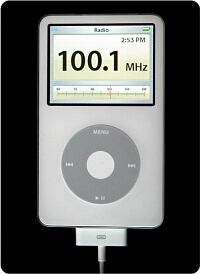Study: what should be an audio player?
 The miniaturization of electronics today has reached the point that you can put so much clever stuffing into a box the size of half a matchbox that it takes several hours to read the instructions on it. But does the consumer need all this? Millions already own the most accessible and popular gadget, an MP3 player. Are they satisfied with their “toys” or something they lack? This question was decided to answer by specialists from Jacobs Media , who in March conducted a survey-study among an audience of radio stations.
The miniaturization of electronics today has reached the point that you can put so much clever stuffing into a box the size of half a matchbox that it takes several hours to read the instructions on it. But does the consumer need all this? Millions already own the most accessible and popular gadget, an MP3 player. Are they satisfied with their “toys” or something they lack? This question was decided to answer by specialists from Jacobs Media , who in March conducted a survey-study among an audience of radio stations.The number of respondents included more than 25 thousand people who visited the sites of 69 US music stations, focused mainly on rock music. They answered a few questions about what additional features they would like to see in their player, and what would be superfluous. It should be noted that in the two years that have passed since the last such study, the share of owners of personal players increased from 21 to 47 percent, and almost half of those who do not yet have such a device said they would most likely purchase it within a year.
The most important conclusion that manufacturers such as Apple, Creative and not very popular in the Russian market, but very popular in the US SanDisk, should pay attention to is that buyers want to have an FM receiver in their player. Unlike their competitor iRiver, these and other well-known brands often neglect this simple function, which caused resentment among 33% of respondents, and among iPod owners - 43%.
A favorite parameter by marketers, as the player’s memory capacity is only a quarter of the respondents concerned. Obvious overkill also seems to be the ability to play video, which is needed only by 7%. And only 3% of respondents want to further reduce the physical size of gadgets.
')
It is also interesting exactly where people prefer to use the player. About 60% do it during sports, 42% - while walking, and 33% each - at home, at work and in transport.
Since Jacobs Media conducted this study for broadcasters, it is worth adding that, although active radio listeners spend more time with receivers, there is an obvious tendency for broadcast stations to fall in favor of personal players.
Source: https://habr.com/ru/post/6242/
All Articles